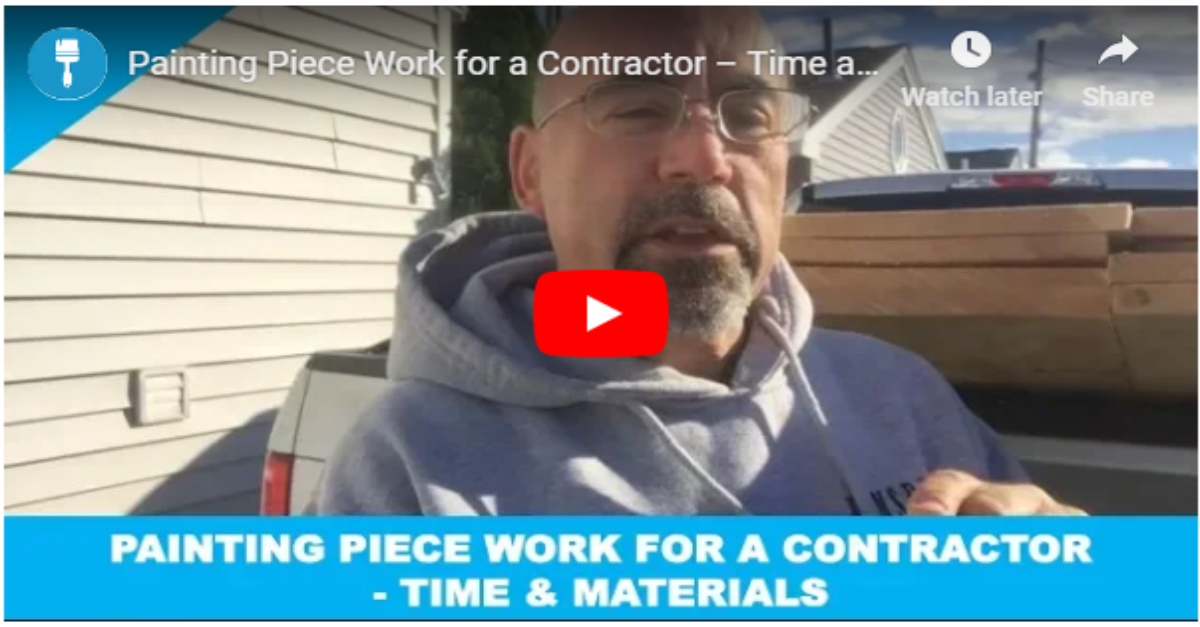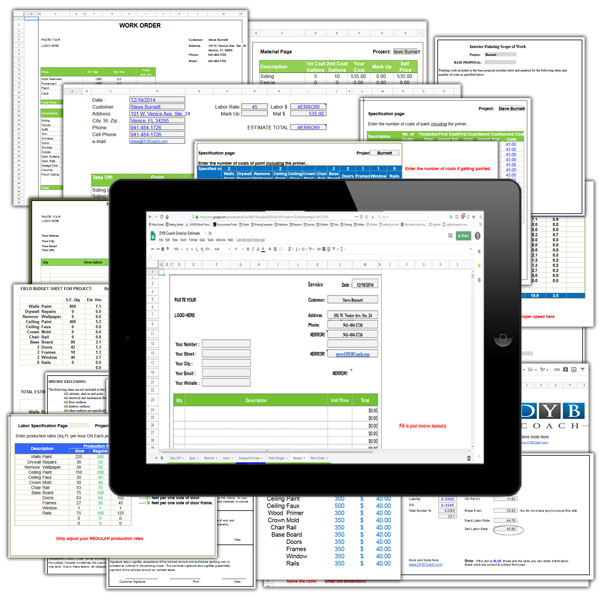
Painting Piece Work for a Contractor – Time and Materials
Painting piece work for a contractor – time and materials, I wanted to share what we do and what works for us.I am Ron Ramsden and I am a DYB coach, also a painting contractor here in New England.
Piece work; right here we have board and baton. Board and baton is actually a rough, cut, sawn, piece of wood, very popular years ago in New England. And we don’t see it as much anymore and it is hard to get.
Well, you have to look for it, it is not that hard, but none of the big boxes carry this… some of the regular local lumbering yard.
It actually took a half hour to drive up to pick this up, plus time at the lumbering yard, plus a half hour back, that is going to be added on to our time and material.
We have 21 pieces of board here, the batons are already on the job site.
This is going to be about a gallon, if you add up to all the square footage, it is a little less than a gallon, but we use a gallon of oil primer or tint it, and we are also going to use a gallon of finish paint, two rollers; one for the primer, one for the finish.
We would love to spray this, in fact, spraying would be a lot faster, but our shop is too far away from the actual job site and this was an add-on at the job site, so this is all going to be added as time and material like I said.
We are also going to use a little paint thinner, our time to actually roll this out, we don’t need to do any prep on this because it is a rough, sawn wood.
To roll this out, we are going to roll all 6 sides of the oil primer, prior the contractor, and we are going to put finish coats on 5 of the sides, the actual dwelling is not going to be finish painted.
Because we have our history of production times, we know from our setup which is added into our time and material, we use a stackable system, so we could actually put 3 boards across, add another stackable, 3 boards across and keep going.
It is going to take us 2 and a half hours to first co-prime 5 of these sides and get it all set up. We are then going to come back for the second coat, we only have to prime the second side on the return coat, but we have to take these stackables apart.
We want to make sure we account for all that. So, from setting up, to first coat of primer, coming back, breaking it down a little bit, adding the second coat of primer on that last side, is going to take approximately 3 hours.
When it is dried, we are going to come back, take it apart again, 5 sides, so we don’t have to do it the second time. So, 5 sides, as we restack it, we are going to get its finished coat.
That’s going to take another 2 hours. We have 3 hours for the first oil and that includes the coming back for the backside which will take 2 more hours to do the finish coat on the 5 sides. This is all rolled, if we were spraying it, it would be much faster, but we also have some other things we have to worry about other than spray. Oil paint, and clean up the machines and stuff.
But whatever way you do this, make sure that you aren’t using your phone to time yourself, you have a clock, you are watching it, because you want to measure your production, how long it takes you to do 5 or 10 of these. And then keep a note of it, if you are using an estimating software or you just have a great log to put this in, so next time, you will know exactly what you are going to charge, you want to make sure you are getting paid enough.
Material-wise; we are going to have a gallon of primer, a gallon of the finish paint, and 2 rollers. So right there we are looking at about $80 worth of material, also some paint thinner if you want to throw that in.
We have 5 hours’ worth of production here, we have an hour of drive time, our contractor is even having us deliver them to where they have to go which is down the street here. So that is probably about another half hour. It’s 6 and a half hours’ worth of time here, so we have time and material, now you have to figure out what your time is worth. We have discussed this on our previous video about time, you have to make sure you cover all your overhead, I know painters who are charging anything from $45 to $75 an hour.
Once you’ve figured out your time, you can time it and you can also use this as a filling, something like this is great for a filling for half a day, if you are in the shop, it is all the better, because you can be doing 3 or 4 things at the same time.
But my biggest take away that you should have right here is, measure your time. You want to make sure that you have all your time accounted for because if you guess, you are going to get it wrong, you are going to forget a step, you are going to forget what it actually took you to produce the quality that you are looking for.
Once you start measuring all your production rates on different things, this is an oddball thing that we don’t do every day. You know, we might do this 2 or 3 times a year, but writing this down.
Having an estimating software and we will put it as prep… we call this board and baton, so board and baton is what we log it under, and we are going to have prep for board and baton, we have finish for board and baton.
Once you start logging all your different production rates for different things that you do that are out of the norm, it would be much easier, much more profitable and that’s the big thing; being profitable while doing this, anybody can
do this for free, but we want to make money there.
I hope this helped? If it did, let me know. Please, if you need to reach out to me, its ron@dybcoach.com, find me on Facebook, send a message, I would love to chat with you. Have a great day,

